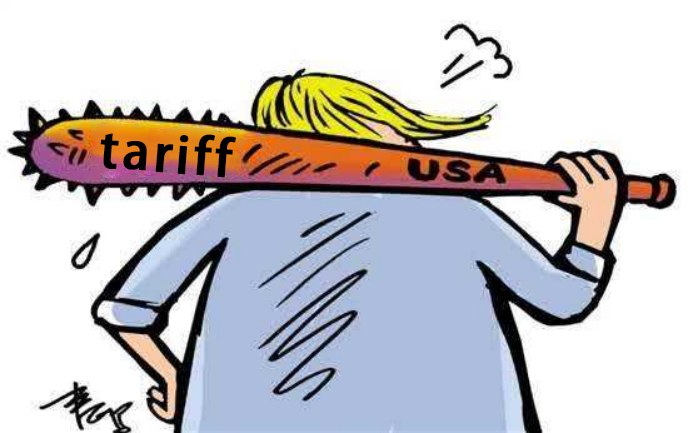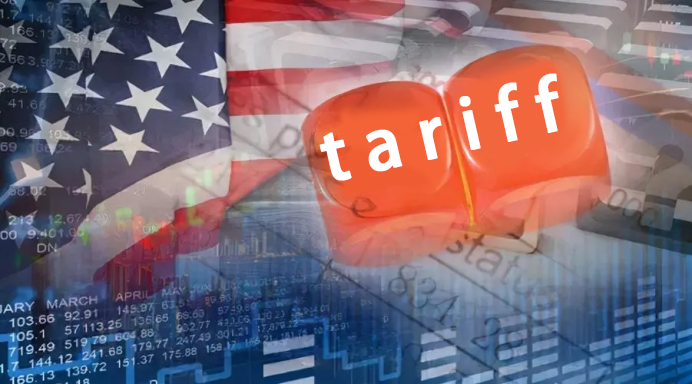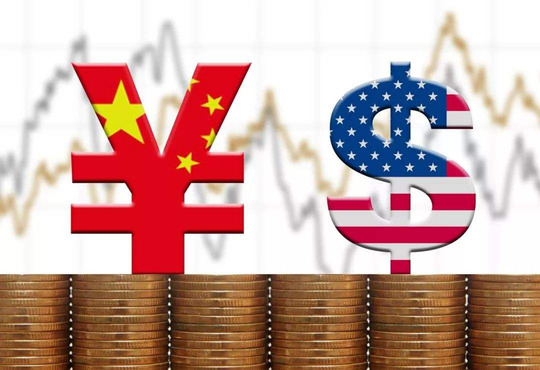
When the U.S. government raises the stick of tariffs again in 2025 and imposes punitive tariffs on imported display panels, this is not only a regular adjustment of international trade policy, but a significant sign that the global technology industry game has entered the deep water area. As a basic strategic material in the era of digital economy, display panels run through almost all modern technology products, from smart phones and laptops to automotive displays and medical equipment. The U.S. tariff adjustment, ostensibly to solve the so-called "unfair trade" problem, is actually a well-laid out industrial strategic action, the impact of which will go far beyond the scope of a single industry, and redraw the power map of the global technology supply chain.
The U.S. panel tariff policy in 2025 is by no means isolated, but a key component of the Biden administration's "small courtyard and high wall" technology competition strategy. According to the data disclosed by the U.S. International Trade Commission, the tariff adjustment will implement a tiered tax rate for LCD, OLED and next-generation Micro-LED panels, with a particularly significant increase in the tax rate for large-size high-end panels. This differentiated design exposes the true intention of the United States: to curb the rise of China's panel industry to the top of the value chain, and at the same time, to strive for a development window for local emerging display technologies.
This policy and the CHIPS and Science Act form a policy combination to serve the "reindustrialization" strategy of the United States. It is interesting to note that the effective date of the tariffs coincides with the expected production time of several domestic panel manufacturing plants in the United States, including the quantum dot display device production line under construction in Arizona. This "coincidence" of timing reveals the essence of tariff policy – creating a period of market protection for U.S. domestic industries. U.S. Secretary of Commerce Gina Raimondo has publicly stated that "these measures will ensure U.S. leadership in key display technologies for the next decade," outlining the strategic considerations behind the policy.

The tariff adjustment immediately triggered a chain reaction in the global panel industry. South Korea's Samsung Display quickly announced that it would adjust the capacity allocation of its Vietnam factory, diverting products originally scheduled to be exported to the United States to the European market; Japan's JDI has accelerated negotiations with Apple to convert its U.S. factory into a dedicated production line. The most dramatic shocks came from Chinese panel giants BOE and TCL Huaxing, which together account for about 45% of global LCD production capacity, and their US customer base is at risk of a cost surge of more than 30%.
Supply chain data reveals a deeper crisis: the U.S. market accounts for about 28% of global demand for high-end panels, but domestic production capacity can only meet less than 15% of demand. This structural flaw has led to a short-term dilemma for U.S. electronics manufacturers – either to withstand rising cost pressures or to redesign their products to fit the technical parameters of local suppliers. Hewlett-Packard, Dell and others have begun to evaluate the possibility of relocating some of their production lines to Mexico to avoid the impact of tariffs. The consulting agency DSCC predicts that the tariffs may lead to a fundamental restructuring of global panel trade flows in the next three years.

The essence of tariff wars is a struggle for technological leadership. According to data from the National Science Foundation, China has maintained the world's largest patent application in the field of display technology for five consecutive years, especially in the field of flexible OLED and Mini-LED. Tariffs are actually a tactical option for U.S. companies to catch up. Apple's recent partnership with Corning to invest in micro-LED research and development shows that the U.S. is trying to rebuild its competitiveness through the Tariff Protection Technology Alliance.
This trend of technological fragmentation will force the global panel industry to form a parallel system: on the one hand, there is a "cost-scale" supply chain led by China, and on the other hand, there is a "technology-security" supply chain cooperated by the United States and South Korea. The danger is that when industry standards begin to diverge, global consumers may face a decline in product compatibility and a slowdown in innovation. As David Robertson, a professor at the MIT Sloan School of Management, warns, "We are destroying with our own hands the global innovation network that has underpinned the tech boom of the past three decades."

In the face of U.S. tariff barriers, China's panel industry is experiencing difficult but necessary transformation pains. BOE's 2025 semi-annual report shows that its share of revenue in the US market has fallen to 15% from 22% last year, but at the same time, the European and Southeast Asian markets have increased by 37% and 29%, respectively. This market diversification strategy is forming a positive interaction with technological innovation - the 8.6 generation OLED production line built by TCL Huaxing in Guangzhou was put into operation three months ahead of schedule, and the yield rate exceeded 85%, reaching the international leading level.
More strategic is the vertical integration of the industrial chain. China's panel companies are accelerating the extension to the field of upstream equipment and materials, Xinyihua Intelligent Equipment has been able to provide key equipment such as evaporation machines, and CSG Group's display glass substrates have entered the mainstream supply chain. Although this kind of capacity building of the whole industry chain will increase costs in the short term, it will enhance the industry's ability to resist risks in the long run. Qiao Yueshan, director of the Electronic Information Department of the Ministry of Industry and Information Technology, pointed out: "We must transform every external pressure into the driving force for industrial upgrading, and realize the leap from following to leading in the field of new displays.

The imposition of panel tariffs by the United States is another landmark event in the ebb of globalization. According to World Trade Organization monitoring, the share of high-tech products in the global trade restrictions implemented since 2023 has soared to 43%, up from 17% in 2016. This trend is changing the logic of multinationals' investment – Samsung Display's additional $4 billion investment in Texas is based more on geopolitical considerations than economic efficiency.
R&D cooperation in emerging technologies such as quantum dot displays, holographic displays, and other fields has cooled significantly, and has been replaced by "technological nationalism" led by national governments. The European Union's recently adopted European Display Technology Sovereignty Initiative plans to invest 11 billion euros in the development of local production capacity; India, on the other hand, has attracted panel manufacturers through the Production-Linked Incentive Scheme (PLI). This fragmentation of the global industrial chain will inevitably drive up the cost of technological innovation and slow down the adoption of next-generation consumer electronics such as foldable devices and AR glasses.
From a historical perspective, the U.S. panel tariff policy in 2025 may be regarded as a watershed for the global technology industry from cooperation to competition. When the principle of economic efficiency gives way to national security considerations, and when the innovation network is artificially fragmented, the entire industry will pay the price. For Chinese panel companies, this is not only an unprecedented challenge, but also an opportunity to get rid of path dependence and climb to the top of the value chain. The future will not be about tariffs, but about who can build a more dynamic innovation ecosystem – from breakthroughs in hardware technology to the impact of standard-setting and the cohesion of a global talent network.
The endgame of competition in the global panel industry may depend on the answer to a core question: who can redefine the value of openness and cooperation in an era of technological nationalism? This issue is not only related to the rise and fall of an industry, but also determines the height and breadth of the development of the digital economy. Tariffs can erect temporary market barriers, but true and lasting technological leadership is built forever on the fertile ground of open innovation.
Name: lily
Mobile:185 7332 9919
Tel:185 7332 9919
Whatsapp:8618573329919
Email:sales@huayuan-lcd.com
Add:Factory No.9, Zhongnan High-tech Intelligent Manufacturing Industrial Park, Tianyuan District, Zhuzhou,Hunan, China, 412000